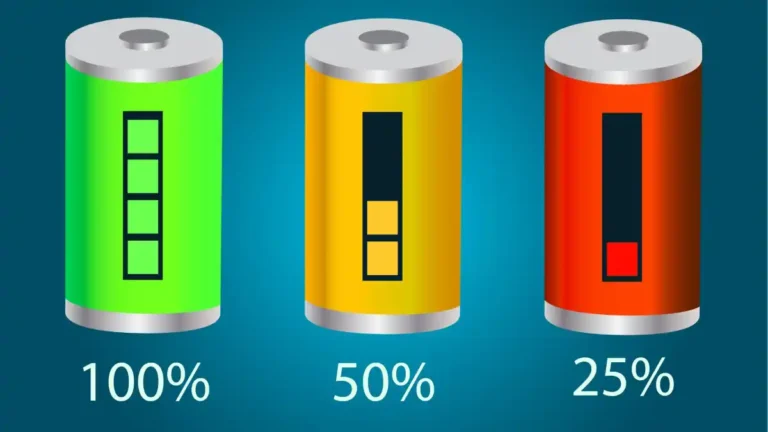Dreaming in Straight Lines, Drowning in Crooked Realities
Mankind has never been stingy with promises. By now, we were all meant to be sipping martinis in gleaming domes beneath the sea, while well-trained dolphins executed aquatic ballets outside our office windows. The sun, once a god of fire and harvest, was supposedly to be enslaved as an infinite energy source, bathing our homes in guilt-free light and powering our economies without so much as a greasy fingerprint of oil. Nuclear fusion would summon the fire of the stars down to Earth, a man-made Olympus flickering in our basements.
Electric cars, we were assured, would chase the petroleum engine into an unmarked grave within a few years. Once upon a time, nuclear energy was going to make electricity “too cheap to meter.” Now the same fairy tale is told of solar panels and whirling windmills. Both times, reality ruined the party. Meanwhile, the cosmic carnival hasn’t shut down: SpaceX now vows to plant full-blown cities on Mars by 2030. Believe if you like—but only if you also keep a spare ticket to Jonestown handy. For half a century, every major newspaper, every TED stage, has echoed the same gospel hymn: salvation through technology is just around the corner.
Every one of these glittering promises arrives like a messiah. All that is required of us, the flock, is to “change.” Change the way we live, work, eat, vote, commute, copulate, heat, breathe, and ultimately, die. We must become model stewards of the planet, earnest global citizens, and the sort of ancestors that children’s books weep over. The future, we are told, is ours—provided we can prove worthy of it.
And then come the facts, like a hangover after a revivalist sermon. The breakthroughs make headlines, the speculations make breathless podcasts, but very few of these utopias are ever delivered. What we get instead is a carousel of press releases, pilot projects, subsidies, bankruptcies, and eventual disillusionment. The trumpet of destiny wheezes out of tune. Reality, that old saboteur, catches up. And humanity, like the idiot it is, begins dreaming again.
The error is not simply in bad forecasting. The real problem is that we insist on worshipping a false model of progress. We cling to the myth of the straight line—the delusion that history advances like a gleaming train on a single track, each innovation an upgrade, each year an improvement, until we arrive at the frictionless tomorrow. This myth is warm and comforting. It allows us to imagine ourselves as passengers in a carriage of destiny, sipping wine while the tracks of history deliver us to paradise.
But history is not a train ride. It is a drunk stumbling through a swamp—lurching, slipping, cursing, occasionally glimpsing a lantern in the fog before faceplanting again. Progress doesn’t arrive in orderly installments. It jerks, stutters, collapses, crawls back in strange disguises. It is not a staircase but a maze of half-built stairwells that lead into brick walls.
And worse—it rarely reveals itself honestly at first. Take the carnival of wind and solar energy. In the public imagination, they were to be our new gods, glowing halos over a redeemed Earth. In practice? Progress came at the margins, achingly slow, never fast enough for the vanity projects of policymakers. Enter the dilemma: if leaders wanted their virtue-signaling toys to survive, they had to cheat. Subsidies, mandates, regulatory gerrymandering—whatever it took to keep these feeble creatures breathing.
On their own, the projects were monsters, stillborn and gasping. So governments lined up the incubators and kept them alive with endless injections of taxpayer cash. They assured us the transfusions were temporary, just until technology “caught up.” But it never did. Cut off the subsidies, and the projects flatline instantly. And who foots the bill for this necromancy? Take a guess—it isn’t the visionaries in Davos.
Humanity, as ever, is rich in imagination but bankrupt in patience. We dream in straight lines, but reality drags us through crooked paths.
And when the dream inevitably collapses, the blame is never on the prophets. No, the guilt is handed down to the people. We didn’t change fast enough, didn’t bike to work often enough, didn’t give up meat or swallow the sermon whole. The promise isn’t revoked, only deferred. The utopia is never dead—just delayed, like the apocalypse of some doomsday cult leader who insists “next Tuesday for sure.”
You notice the pattern. The Soviets scolded their people for failing communism. The Nazis, after collapsing in ruin, muttered that the population lacked “seriousness.” Today’s green overlords strike the same pose, pointing their fingers at us for not being sufficiently enlightened to usher in their paradise. Always just one more sacrifice, one more act of faith, one more leap off the cliff—and then the future will finally arrive.
This is the sleight of hand: turning techno-utopianism into moral blackmail. And so the public oscillates—wide-eyed hope, bitter cynicism, repeat. Sacrifice yields nothing but broken promises, and people withdraw. The rhetoric collapses under the weight of its own piety. And beneath the sermonizing, the old machines grind on.
Real evolution does not arrive as a cataclysm. There are no Great Leaps. Even our biggest breakthroughs—penicillin, electricity, the internet—were less revelations than accidents stumbled upon by persistence, tinkering, and sheer stubborn luck. Progress, when it happens, moves sideways. It hacks its way forward through failure, detours, and the occasional stroke of lunatic genius.
Look at the shift from horse to motorcar. Vienna, a century ago, already boasted rattling motorized vehicles, yet in my childhood of the 1970s, farmers still clopped into town with horse-drawn carts. The two eras cohabited for decades. Change does not arrive with the trumpet of Gabriel but with the slow shuffle of coexistence.
The true shape of progress is lateral, not vertical. It is no rocket to heaven. It is a network of blind alleys, accidental discoveries, and improbable shortcuts. History is not sculpted by visionaries but cobbled together by tinkerers, bureaucrats, and opportunists. Most ideas rot. Some survive. A few change the world—and never in the way they were advertised.
Consider drones. They are not some Ukrainian novelty. The U.S. military has been fussing with them for decades, usually in the most expensive way possible. Their Global Hawk drone costs more than a fifth-generation fighter jet—a marvel of bureaucratic waste, not revolution. But the Ukrainians, backed against the wall, took commercial toys, bolted grenades onto them, and turned them into flying nightmares for Russian troops. Cheap plastic, batteries, and wires now stalk billion-dollar hardware. Necessity, not visionary speeches, forced the breakthrough—and when the war ends, Ukrainian manufacturers will be the most sought-after advisors in the world.
Even nuclear power, the poster child of the “leap,” was never what it promised. It solved no single problem neatly. It tangled itself in politics, regulation, paranoia, and money. Fusion? Forever thirty years away, as it has been since Eisenhower was still upright. And even if we had it tomorrow, it wouldn’t be physics but politics, capital, and trust that determined its fate. And those three are in even shorter supply than helium-3.
The same story unfolded with the shale revolution. People imagine big oil giants, but the revolution was birthed by countless small-time drillers, men with a handful of wells and no patience for grandiosity. They couldn’t afford moonshots. They tried, failed, cut losses, tried again. They weren’t planning to turn America into an energy exporter—they just wanted to squeeze the lemon a little harder. And in doing so, they stumbled into a revolution that still echoes today.
That is the danger of techno-messianism: not simply that it overpromises, but that it blinds us. While we daydream about flying hydrogen cars, our power grids decay. While we throw billions at moonshots, our sewer systems rot. We ignore the modest, the fixable, the unglamorous—the very things that actually extend life and reduce suffering. Clean water, refrigeration, sewage, vaccines. The boring miracles.
And so, the fantasy machine cranks on. Ten trillion dollars have been spent on climate virtue already, accomplishing nothing measurable but still demanding the next sacrifice. Geoengineering is now the shiny idol, the next global boondoggle. Having failed to command the climate with subsidies, we shall now attempt to rewire the planet itself. What could possibly go wrong?
The cure for this disease is not despair but maturity. To outgrow the fantasy of the Great Leap is not to surrender hope, but to reclaim it. We stop waiting for miracles. We learn to build redundancies, to accept friction, to patch systems, to value partial victories. We stop yearning for bottled suns and start using insulation.
This is not a call to give up—it is a call to grow up. Utopia is for children. Evolution is for adults.
We don’t need to be saved. We need to learn how to endure.




